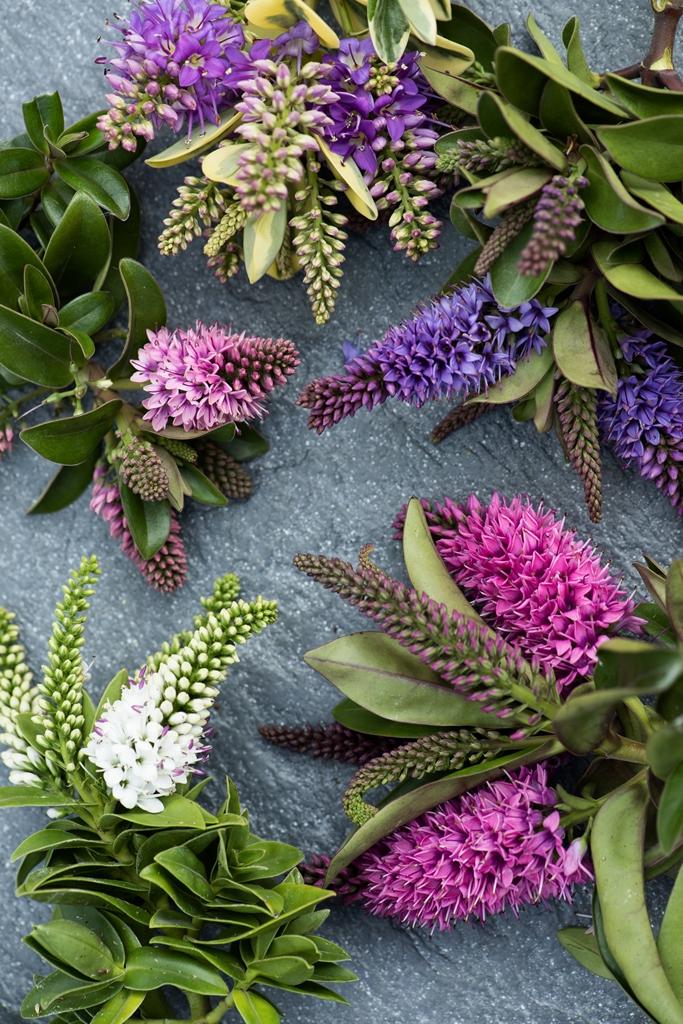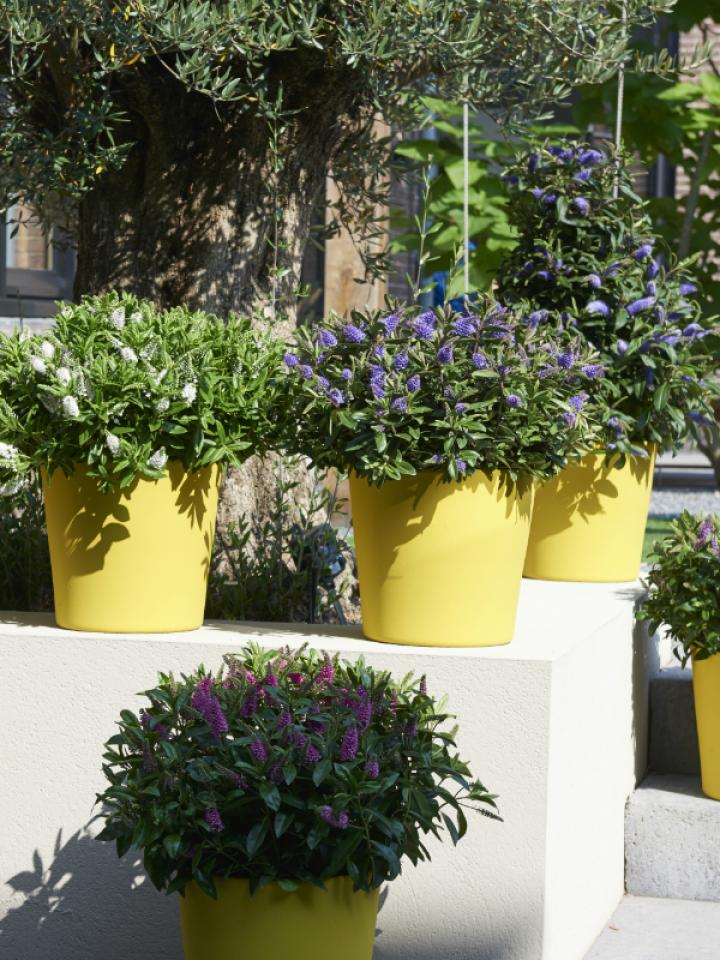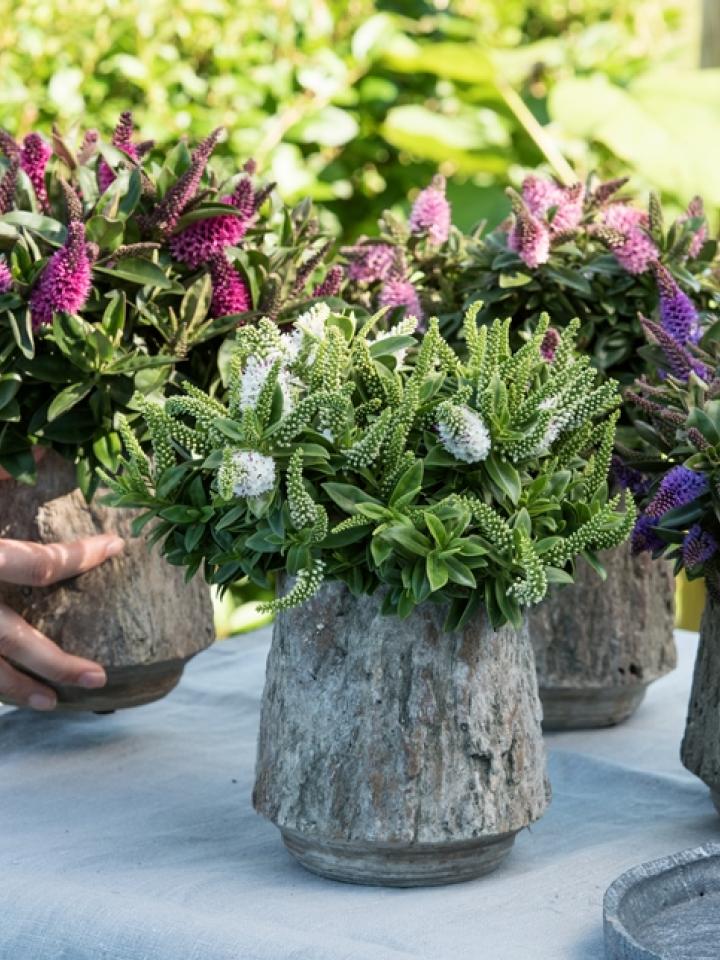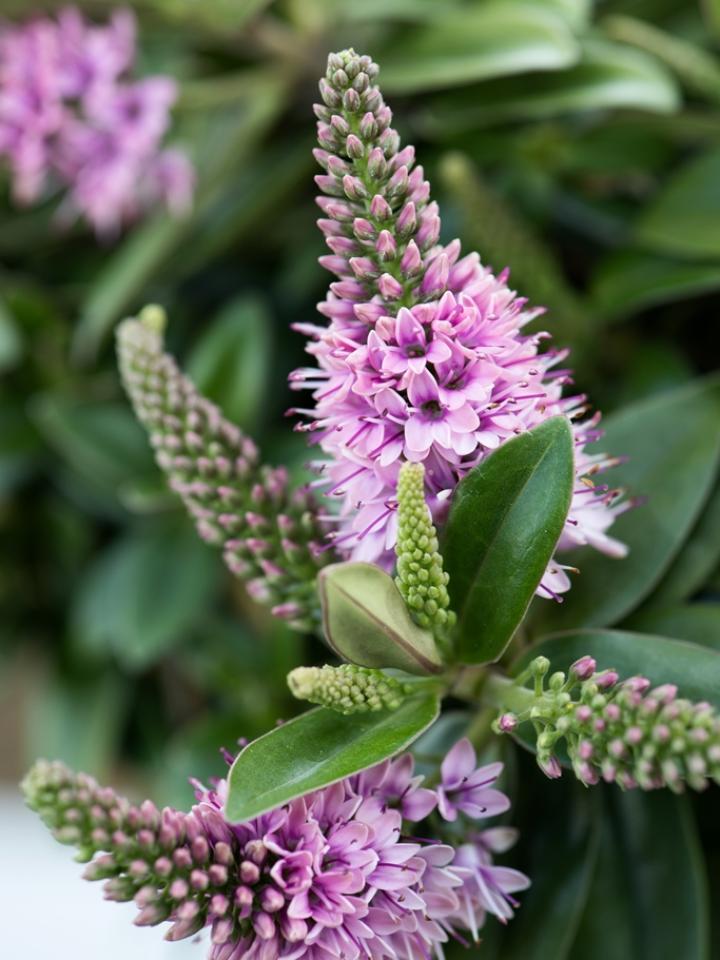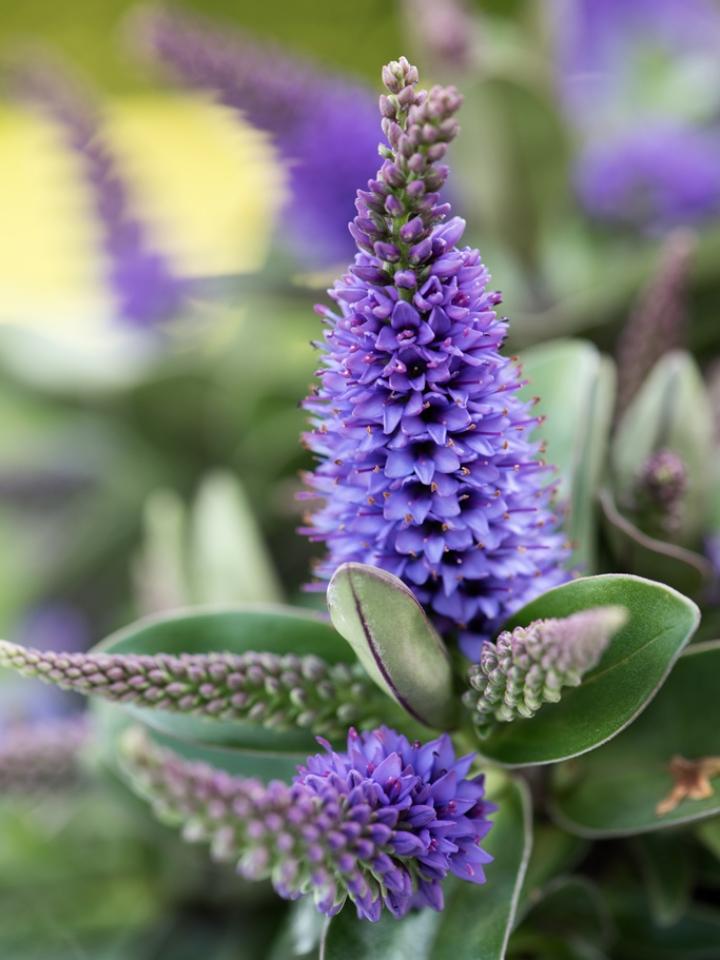WHAT are the different SPECIES AND COLOURS OF HEBE?
There are more than 100 species of hebe, varying in height, leaf shape and flower colour. Hebe can be recognised during flowering periods by its beautiful flower clusters. These clusters grow in different colours, such as white, pink, purple and blue.
Hebe leaves can range from narrow to broad, with some species having striking edges or shades. By combining different varieties, you can add contrast and depth to your garden. Thanks to this diversity, there is always a species that suits your garden style and colour scheme. The most well-known hebe varieties are:
- Hebe Emerald Green: this shrub veronica grows straight upwards, with narrow, glossy, green leaves and flowers in shades of white to light purple.
- Hebe Red Edge: the leaves of this striking hebe have red ledges. The flowers are usually lilac or purple.
- Hebe Wiri Charm: this shrub veronica is characterised by its compact shape and purple flowers. It's a common choice for borders and rock gardens.
- Hebe Autumn Glory: this variety is known for its abundant flowering of purple flowers in late summer and autumn. This shrub veronica grows in a compact way, without as much height as other varieties.
WHEN DOES HEBE FLOWER?
Hebe is known for its long flowering period, ranging from late spring to early autumn. Flowering depends on the species of plant and climate in which it's growing. Hebe usually flowers in earnest during summer, which is when you'll enjoy the beautiful, cloud-like flowers of this bloomer.
WHERE SHOULD HEBE BE PLANTED?
Hebe copes well with different weather conditions, but thrives best in well-drained soil and a sunny spot. Make sure the plant catches at least several hours of sunlight a day. If you're placing this plant in a pot, it's important to use good potting soil and water the plant regularly. Shrub veronicas can withstand salty air relatively well, making them ideal candidates for coastal gardens and balconies.
HOW TO CARE FOR HEBE or SHRUB VERONICA
Have you planted hebe in your garden or on your balcony? Then of course you want to enjoy it to the full. this requires learning to care for it properly. Here are the best care tips for hebe, or shrub veronica:
- Hebe likes a sunny spot and can even handle full sun.
- Hebe likes airy, well-drained soil with a slightly acidic to neutral base. Hebe does not thrive in heavy, clay-rich soil with poor drainage.
- Water young shrub veronicas regularly to ensure they root well. Keep the soil moist, but avoid soaking it constantly. Avoid overwatering, as hebe can be susceptible to root rot in too humid conditions.
- Mature shrub veronicas are more resilient and can withstand drought better. Water mature plants only when the top layer of the soil is completely dry. Watch for signs of drought, such as wilted leaves.
- Are you putting your shrub veronica in a pot? Then make sure you have good potting soil, regularly check the humidity of the potting soil (water evaporates faster from pots than from open ground) and protect the plant from cold or frost by moving it to a different spot or protecting it with bubble wrap.
- Check shrub veronica regularly for pests and diseases and take appropriate measures if necessary.
- Give hebe some light fertiliser in spring to promote growth and health.
- If necessary, add a mulch layer to the soil you plant hebe in to retain moisture and prevent weeds.
HOW TO PRUNE HEBE
Shrub veronica does not require much pruning, but you can maintain the plant's shape and density with light pruning after it finishes flowering, usually in autumn. In addition, remove dead or damaged branches after hebe's flowering period is over to promote the plant's health and growth.
HEBE: GARDEN PLANT that's ATTRACTive to BUTTERFLIES AND BEES
During hebe's flowering period, you will enjoy beautiful flowers. These are not only visually attractive but also attract many butterflies and bees to the plant thanks to their long stamens. Who doesn't want a veritable flock of butterflies and bees in their garden? What a lovely sight! Hebe is a great choice for attracting wildlife.
WHERE DOES HEBE COME FROM?
Hebe is native to New Zealand, French Polynesia, the Falkland Islands and South America, where the plant flowers in the wild. Hebe belongs to the plantain family (Plantaginaceae). This plant family includes many herbaceous and woody plants and shrubs, such as plantain, bacopa and veronica (honorary price).
WHAT'S THE SYMBOLISM OF HEBE?
Hebe's namesake is Hebe, the goddess of youth in Greek mythology. She represents the blossoming of nature and spring and bestows nectar to the gods. Hebe symbolises this freshness, vitality and youth. This makes it the perfect plant to add vibrancy and energy to your garden or balcony.
